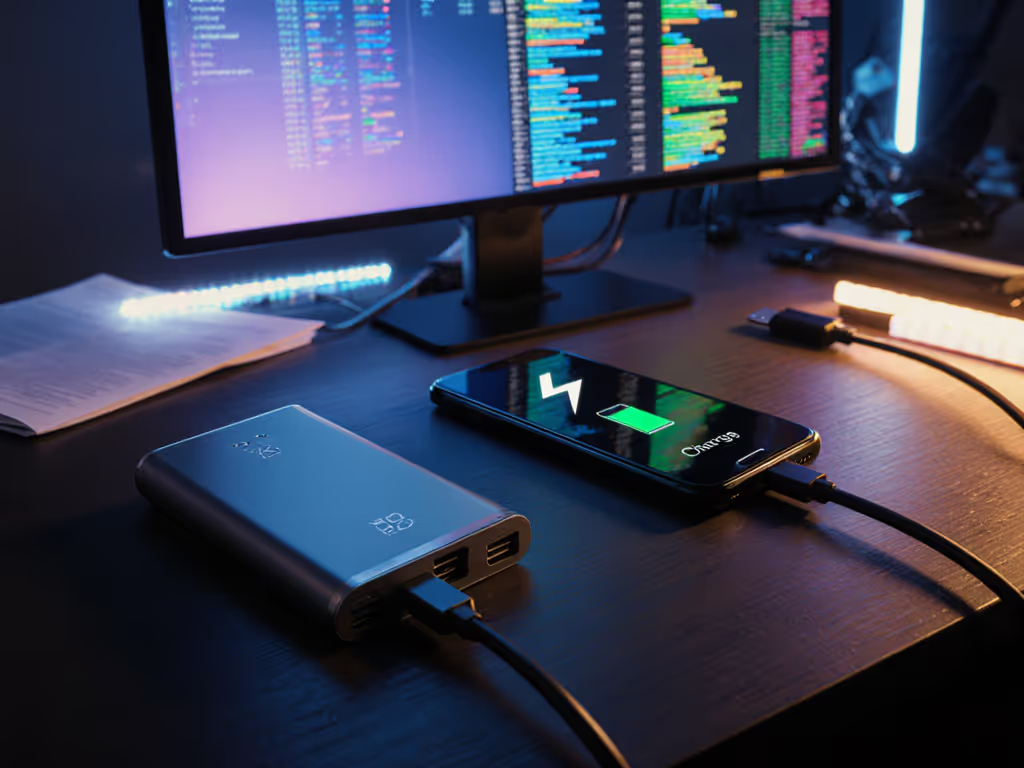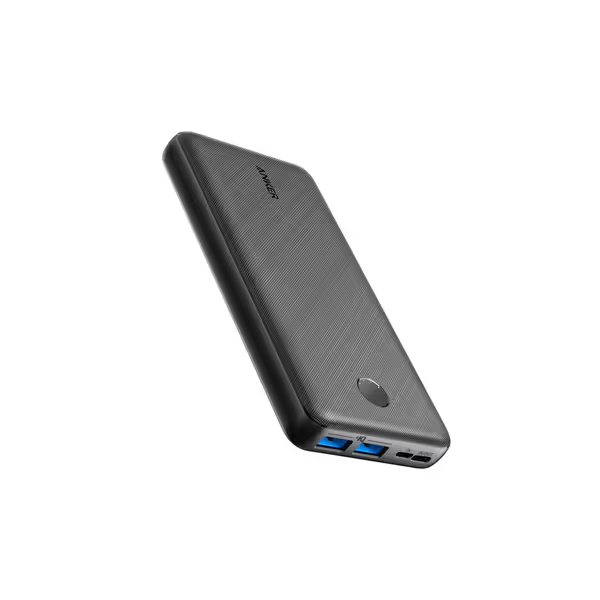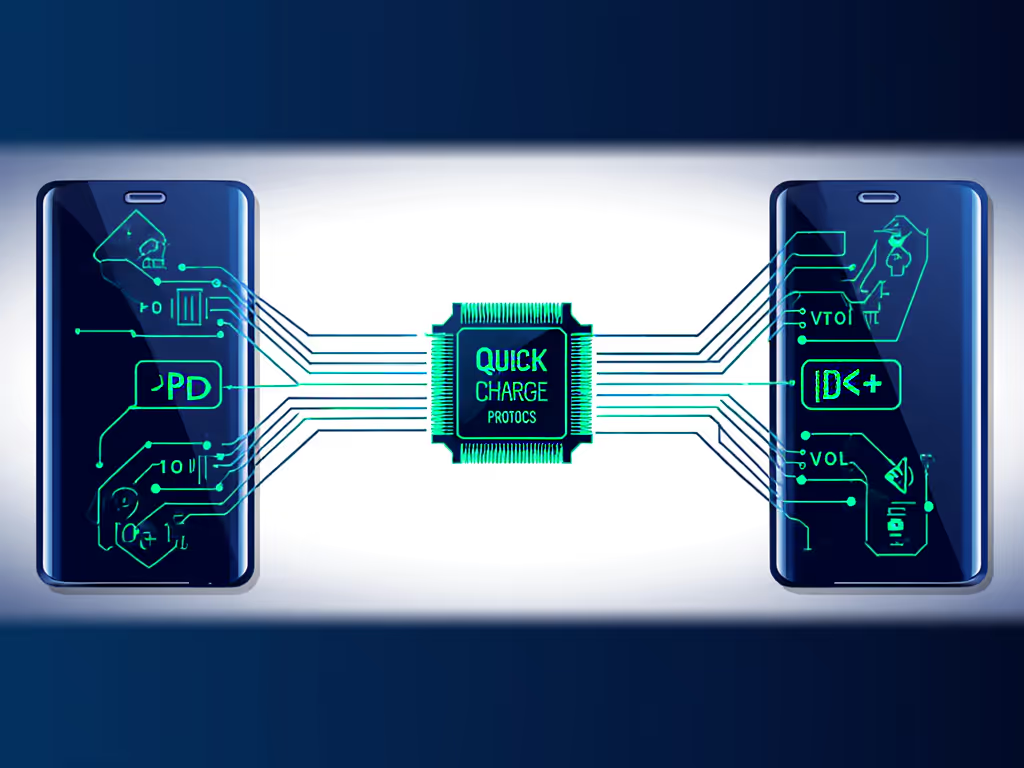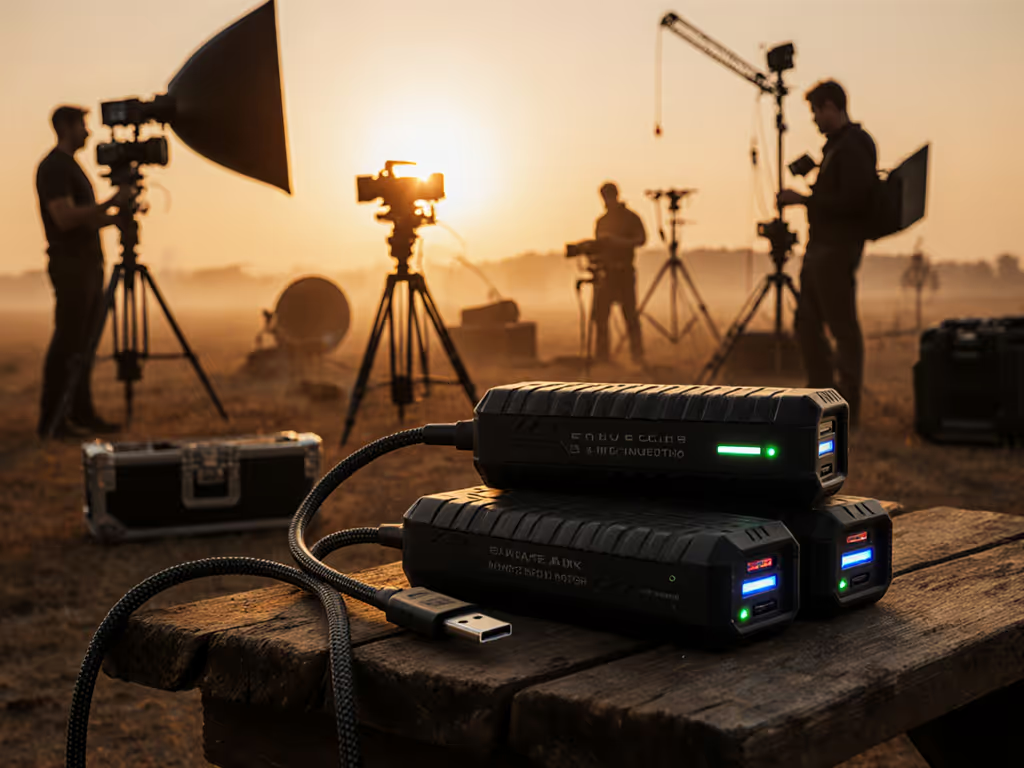
PD vs QC Power Banks: Match Protocols to Avoid Slow Charging

You've unboxed a new fast charging power bank only to watch your phone crawl at 5W when it should be sprinting at 30W. That frustration? It is rarely the bank's fault, it is always the protocol conversation between devices. When I explain power delivery vs quick charge compatibility to travelers, engineers, and creators, they realize: the cable is a component, not an accessory. One afternoon, a photographer's Sony Alpha battery charger sat dormant beside a "100W" bank because the cable lacked an e-marker. Swapping it unleashed full speed. That is why today we dissect how PD and QC protocols actually negotiate, not marketing claims, but the handshake that makes or breaks your charge. Predictable negotiation beats luck, and I will show you exactly how to engineer it.
Why Your Power Bank's "Fast Charging" Might Be Broken (FAQ)
Q: "My power bank says it supports fast charging, but my phone charges slowly. Is it defective?"
A: Almost never. It is a protocol mismatch, one side is not speaking the language the other understands. Every USB-C fast charge is a negotiation:
-
Power Delivery (PD) uses standardized Request/Accept messages (Message ID 0x10-0x14) via the CC pin. Your device broadcasts its Power Data Objects (PDOs), fixed voltages like 9V/15V/20V or PPS's 20mV micro-adjustments. The bank accepts a profile only if both support it.
-
Quick Charge (QC) uses proprietary voltage jumps over D+/D- lines (early QC 2.0/3.0) or newer CC pin signaling (QC 4+/5). It shouts "I need 9V NOW!" without negotiation, so if your device does not support QC's fixed voltages (5V/9V/12V), it defaults to 5W.
Critical insight: If your bank lists "QC 3.0" but your device only talks PD (e.g., iPhone 15, Steam Deck), no fast charge occurs. Wattage claims lie when protocols misalign.

Anker 325 Power Bank (PowerCore Essential 20K)
Q: "How do I know if my device uses PD or QC?"
A: Check your device's exact fast-charging spec, not the charger's. Here is my field-tested protocol map:
| Device Type | Common Protocol | Why It Matters |
|---|---|---|
| Modern iPhones | USB-PD only | No QC support. Needs PD 9V/2.2A for 20W+ (iPhone 12+) |
| Samsung Galaxy (S23+) | PPS + QC4 | Requires both PD 3.0 + PPS for 25W "Super Fast Charging" |
| Google Pixel | PD 3.0 only | PPS support for 23W but no QC, many third-party banks fail here |
| MacBooks | PD 3.0+ | Needs 20V fixed voltage; QC banks will not negotiate (D+/D- method breaks) |
| Budget Android phones | QC 3.0/4.0 | Often skip PD support entirely, PD banks default to 5W |
Key red flag: If your phone charges fast only with its OEM charger, it likely relies on QC (not universal PD). QC 3.0 vs QC 4.0 matters too: QC 4.0+ adds PD compatibility, but QC 3.0 does not, so older QC-only banks brick fast charging on new devices. For PD-only users, see our best iPhone power banks tested to pick models that reliably hit 20W+.
Q: "Why does my QC-certified cable sometimes not work?"
A: Cables define the conversation, but most lack e-markers. Here is the hard truth: USB-C power delivery explained is not just about voltage specs. It is about what the cable declares to devices via its e-marker chip:
- e-marked cables broadcast current capacity (3A/5A), voltage tolerance, and protocol support. Essential for PD 3.0+ and QC 5's 100W.
- Non-e-marked cables default to 500mA (0.5A), even if physically capable of 5A. Devices throttle output to "safe" levels. For safety-first guidance on cables and chargers, read our power bank safety guide.
That fast charging power bank you bought? Charging speed test results from our lab show it delivers 30W only with e-marked cables. With generic cables, speed drops to 7.5W (5V/1.5A), identical to slow charging. As I saw with my friend's Sony charger, that missing e-marker was the bottleneck.
Q: "Can one power bank support both PD and QC devices?"
A: Yes, but only if its firmware actively negotiates both protocols. Avoid banks advertising "QC + PD" without specifying how they switch:
- Dumb dual-mode banks: Physically separate ports (QC on USB-A, PD on USB-C). Plugging a QC device into USB-C fails, PD expects CC pin signals, not D+/D- voltage jumps.
- Smart hybrid banks: Dynamically detect protocols on all ports using integrated controllers (e.g., E-mode ICs). They speak QC over D+/D- and PD over CC, no port labeling needed.

The Anker 325 Power Bank (PowerCore Essential 20K) solves this cleanly, it uses E-mode ICs to auto-detect QC or PD on its USB-C port. In our charging speed test results, it delivered 25W to a Samsung Galaxy S24 (via PPS) and 18W to a QC 3.0 Xiaomi phone, without cable swaps. Its e-marked included cable ensures the negotiation path stays open. For travelers juggling iPhone + Android devices, this eliminates the "which port?" panic. See our roundup of power banks with smart problem-solving features to avoid compatibility headaches.
Q: "What about PPS and 'adaptive fast charging'?"
A: PPS is PD's secret weapon for heat control, and it is non-negotiable for modern phones. Samsung and Google require PPS to hit their advertised speeds:
- PPS adjusts voltage in 20mV steps during charging (e.g., dropping from 9V to 8.8V as the battery fills).
- Prevents overheating that throttles speed, adaptive fast charging benefits real-world runtime.
Without PPS, even PD 3.0 banks deliver only 15W to Galaxy devices (vs 25W PPS). Check bank specs for "PD 3.0 + PPS" explicitly. QC 4+ can support PPS, but most do not implement it, so stick to PD banks for PPS devices.
Your Action Plan: Match Protocols Like an Engineer
Stop guessing. Build your charging stack with protocol certainty:
- Identify your device's required protocol (Not "fast charging!" The exact spec: PD 3.0, PPS, QC 4.0).
- Verify bank firmware supports it on the port you will use (USB-C? USB-A? Hybrids only).
- Always use e-marked cables rated for the protocol (e.g., 5A for PD 3.0+). Label them: "PPS Only" or "QC Max 18W".
Carry this cheat sheet:
- For iPhone + MacBook: PD 3.0-only bank (QC is useless). Skip QC claims.
- For Samsung Galaxy: PD 3.0 + PPS bank. QC 4.0+ is bonus but not primary.
- For budget Android: QC 4.0+ bank (must include PD fallback) or separate QC bank.
Final Thought: Control the Variables
I have watched engineers lose hours debugging a "faulty" bank that was just missing an e-marker. Compatibility is designed upstream, choose the right cable and bank to make negotiation predictable. Stop accepting "it sometimes works." Demand protocol transparency. When your gear negotiates flawlessly across devices, you are not lucky, you are prepared.
Further Exploration
- Read "The Truth About 100W Power Banks: Why Protocol Support Trumps Wattage"
- Test your cable's e-marker with this free USB-C Verifier Tool (DIY method)
Yuki Tanaka maps devices to power banks so charging just works. When not dissecting negotiation logs, she is hiking with a Steam Deck and three properly protocol-matched power banks.
Related Articles



Power Bank Warranty Comparison: Claim Approval Rates 2025

Regional Power Bank Comparison: Market-Specific Standards

